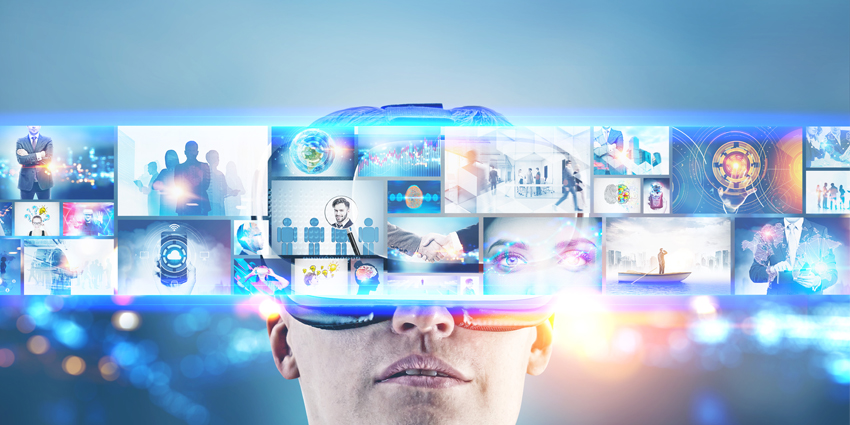AR, VR, MR, XR – there are so many different kinds of “reality” to explore today, it’s difficult to keep track. As the age of digital transformation continues to flourish, new realities represent new frontiers for modern companies. The right investment could be the key to unlocking better productivity and collaboration, safer training sessions, and better customer experience.
Of course, before any business can begin to truly unlock the benefits of different realities, they first need to understand what each “segment” stands for.
Today, we’re going to be taking a closer look at two aspects of the Extended Reality sphere: virtual reality and mixed reality.
Define VR: What is Virtual Reality?
Let’s start with the tech you’ve probably heard of before.
Virtual Reality is one of the most exciting new digital solutions to emerge in the last few years. Initially hyped as the new generation of gaming and entertainment technology, VR has come a long way in its capabilities. Today, we can build VR experiences that transform the collaboration landscape, or even help professionals to learn crucial skills faster.
VR, or Virtual Reality, is the part of the XR spectrum that involves submerging people completely in immersive media. The marketplace is expected to reach a value of $184.66 billion in 2026. This growth is driven by new entertainment demands, as well as a rising need for more immersive digital experiences in the workplace.
With virtual reality, companies build entire computer simulations for people to explore. You can step into a VR environment and feel as though you’ve fallen into a new country or planet. VR technology relies on the use of headsets and spatial audio to immerse someone in an experience. Most tools also come with sensors and controller technology, so you can interact with the environments you see.
In the business landscape, VR represents a powerful tool for training by allowing companies to educate employees in real-life scenarios, without the risk. For instance, emergency responders could be taught how to run into a burning building, without having to do so in real-life.
VR also allows teams to work more closely together. Employees can sit in a virtual room they “share” with other remote employees and create virtual prototypes of products. This reduces the need for travel and eliminates wasted materials as staff work on new designs.
Virtual reality can even transform the customer experience space. With a VR environment, employees can guide customers through how to use a new product or service as though they were face-to-face. Real-estate agents can take customers on digital tours of new homes, and travel agents can give you the chance to visit a location before you even pay for your flights.
Define MR: What is Mixed Reality
So, if Virtual Reality is about building new digital spaces to explore, what’s Mixed Reality?
Mixed reality exists in the middle of the immersive media spectrum. On one side, you have virtual reality, which completely replaces your existing environment with a new, computerized space. On the other side, there’s augmented reality, which overlays digital content into a real environment.
Mixed reality blends elements of both AR and VR, to give a unique experience. Unlike AR solutions which often allow you to see digital content through a filter or app, MR allows interaction with the digital content in your space. You could use gestures to move a piece of digital content around on a virtual whiteboard and see digital avatars of your colleagues sitting beside you. Mixed Reality even has the potential to open the door for things like holograms and holoportation.
While the possibilities of MR are still being discovered, the mixture of digital and real-world environments promises exciting things for the future. Engineers could use MR to see up-to-date information about what a piece of technology should look like and interact with manuals to find out what to do next. Quality controllers can use head mounted displays to access and interact with digital content as they work.
Going forward, Mixed Reality is likely to be a valuable tool for on-the-job training, thanks to the combination of practical instruction and digital information. In the collaboration environment, MR could be the key to helping us connect with our colleagues and clients like never before. Mixed Reality could allow teams to network with each other, work on shared ideas, and even build digital prototypes in real-time.
Which aspect of extended reality do you find most exciting?







